Wildfires have been ravaging California for weeks. The latest round of them—from the Kincade fire near Sonoma to the Maria fire near Ventura—has blazed across more than 100,000 acres. Power outages, forced evacuations, and a trail of destroyed homes and businesses are just the initial signs of destruction, with economic and environmental costs continuing to soar. These come on top of the estimated $400 billion in losses from 2018’s wildfires.
Although the exact causes are still under investigation, electrical equipment owned by PG&E and Southern California Edison likely sparked the fires, which were fueled by a combination of intense winds and dry vegetation. Already facing massive liability costs from previous incidents, the utilities have tried to stay ahead of needed infrastructure maintenance and inspections, but the risks remain high. Even intentional power shutoffs didn’t avert long-term risks—and this after Californians already juggle higher energy bills, higher insurance premiums, property losses, and other disruptions due to wildfires.
Here’s the scariest part: What’s happening in California is not an isolated problem. From saltwater-ravaged tunnels in New York to flooding in Houston to water loss along the Colorado River, it is clear that we did not design our infrastructure and communities to manage our new climate realities. While Congress and statehouses across the country debate how much to spend on traditional repairs and maintenance, we ignore a more fundamental question:
What will it take to redesign our entire approach to infrastructure for an era of climate insecurity?
Considering the extent of recent infrastructure failures—from relatively typical events like seasonal floods to the most extreme natural disasters—it’s no surprise that the American public appears to be taking climate change more seriously. Major national polls, such as those from Gallup and Pew, have found public concern about climate change rising over the last few years. And although Democrats and Republicans remain divided on whether it should be a top priority, members of both parties are increasingly recognizing climate change as a real threat to the country.
What’s happening in California is not an isolated problem. From saltwater-ravaged tunnels in New York to flooding in Houston to water loss along the Colorado River, it is clear that we did not design our infrastructure and communities to manage our new climate realities.
However, even as these broader attitudes shift, the actions of our public and private leaders are not keeping pace. Developers are still building new housing on flood plains. Populations continue to rise in Miami, Charleston, S.C., and other vulnerable coastal areas. And communities from Pennsylvania to Iowa are adding more parking lots, roads, and other paved surfaces that jeopardize their ability to manage stormwater.
The twofold threat of old, inefficient infrastructure alongside a rapidly changing climate means that if we don’t invest in more forward-looking designs, plans, and technologies, more systems will fail. And much like refusing to pay down a credit card bill, delaying payments will make the recovery and rebuilding process end up costing more.
We can already see evidence of this across the country. Major storms have repeatedly overwhelmed the ability of states and localities to handle flooding, forcing the federal National Flood Insurance Program to fill the gap, resulting in an extra $20 billion of national debt. Meanwhile, individual regions are taking on more costs as well, through additional borrowing and infrastructure repairs. Houston, for instance, has not only endured significant costs from flood-damaged homes and businesses after Hurricane Harvey, but would have to spend up to $27 billion to carry out the full range of drainage, street, and land improvements needed for long-term protection.
Our communities don’t have to go broke trying to withstand climate change. The solution starts with more proactive and targeted infrastructure investment to mitigate risk, promote adaptation, and lead to more cost savings in the end.
Globally, the net benefit can be as high as $4 for every $1 invested in more resilient infrastructure—from protected watersheds to cleaner, more distributed energy systems. Achieving greater resilience is not just about spending more money on infrastructure, though; it’s about better demonstrating the economic value of these investments, creating new tools and platforms for upgrading infrastructure, and making sure we have the skilled talent to oversee all this change. To reduce future fire risk in California, for instance, improving transmission lines, limiting development in vulnerable areas, and developing distributed energy grids should be no-brainers. The only alternative is more of the same—more power outages, more destruction, and more costs.
Although change at a national level would help, state and local leaders need to initiate action. Too often, they lack the money, metrics, and plans to accelerate upgrades, opting instead for short-term repairs just to keep systems running. But as the primary owners and operators of our infrastructure, states and localities are in the position of greatest responsibility and risk. They need more proactive leadership that is willing to experiment with new project designs, procurement strategies, and collaborations.
Fortunately, some communities can serve as a positive example. In Mobile, Ala., Camden, N.J., and South Bend, Ind., leaders engaged residents early and often to raise visibility of the challenge at hand. Those cities launched new plans, leveraged digital technology and visualization tools, and built greater financial and technical capacity with the help of multiple state and local organizations. They broke down traditional management silos and tested new ideas as part of a broader public/private/civic team.
Following the same decades-old infrastructure playbook is no longer going to cut it. Delaying repairs and ignoring emerging threats is not only putting more people and places in danger—it’s going to cost us more in the end. Leaders in California and across the country must view this moment not as a threat to be endured, and but as an opportunity for progress and the pursuit of truly forward-looking infrastructure advancements.
The Brookings Institution is committed to quality, independence, and impact.
We are supported by a diverse array of funders. In line with our values and policies, each Brookings publication represents the sole views of its author(s).
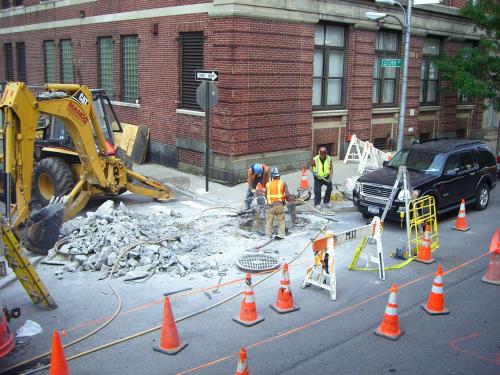
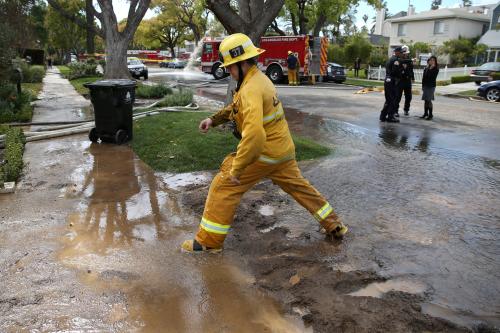
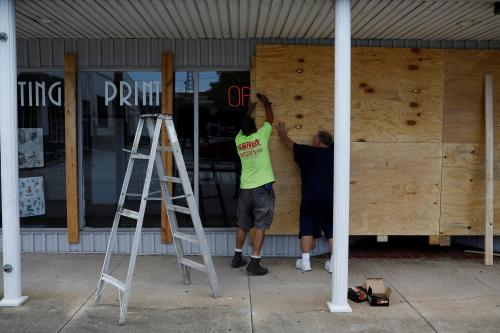


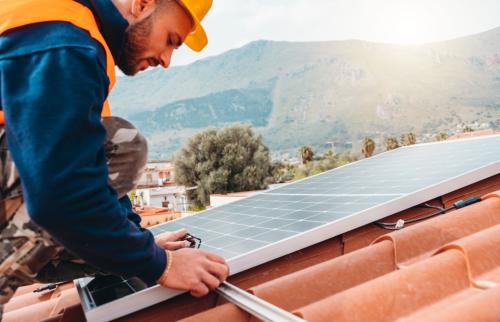
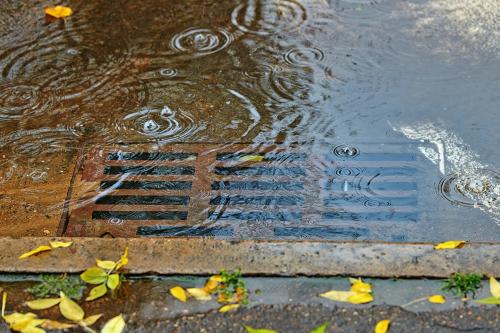
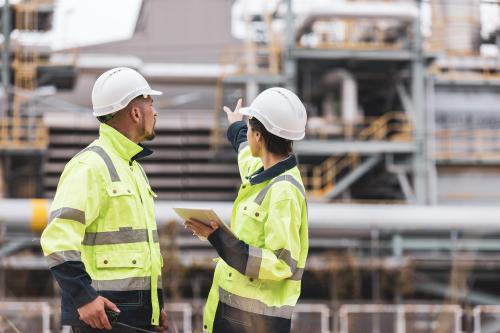
Commentary
As fire ravages California, our infrastructure is still not equipped to handle climate change
November 6, 2019